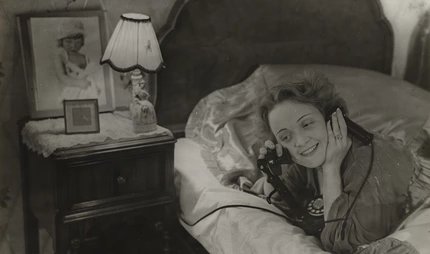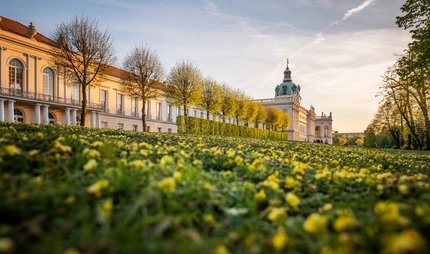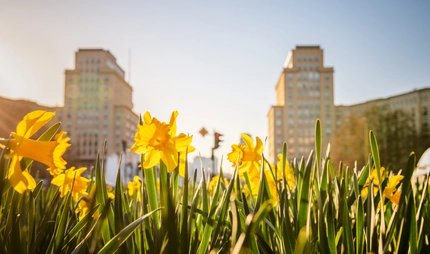
The selection was not easy for us. Because of course there are many more women who have shaped Berlin. Their commitment to equal rights, their critical eye, their scientific insights, their literary thought-provoking impulses, their creative work and their lives themselves are still important today and set the course for the future far beyond the city of Berlin. Whether queen, writer or politician, all the women presented here have helped shape Berlin and the way we live together in the city. We'll give you a little insight into their lives, their history in Berlin and where you can find out more about these famous women in Berlin here.
Tip 1: Romantic myth: Queen Luise of Prussia
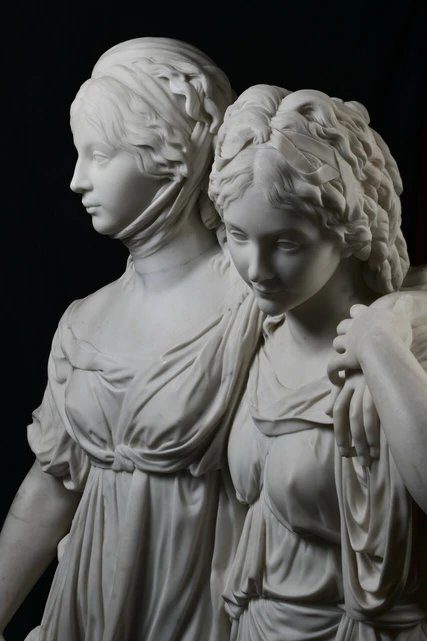
She dies young and far surpasses her husband, King Frederick William III, in fame: Queen Luise (1776-1810). Berlin's greatest artists celebrate her: Schadow creates what is probably Berlin's most famous sculpture group, the Princess Group, which shows Luise with her sister Friedrike. Schinkel built her a mausoleum in Charlottenburg Palace Park, and Rauch designed her funerary sculpture, a delicate sleeping beauty in marble.
Why is Luise already an almost mythically revered woman during her lifetime?
Surely it is not only the queen's political and reforming commitment. Even more unusual in the Berlin of the Hohenzollerns is the intimate love affair that united queen and king: Quite publicly, they are on first-name terms, joke, love to go for walks together and even - share a marital room. And they are probably the first royal couple to show an intensive family life, with children everywhere, at receptions and dinners. Warm-heartedness, informality and elegance make up the much-celebrated charm of the queen, which still lives on today in countless paintings and quotations.
Where: Charlottenburg Palace, Spandauer Damm 10 - 22, Charlottenburg
Tip 2: Self-confident and with a sharp pen for women's suffrage: Hedwig Dohm

Voting rights for women and equal rights - these are the issues that have preoccupied Hedwig Dohm (1831 - 1919) throughout her life. Even as a young girl, she suffered from the fact that she did not have the same educational opportunities as her brothers. Between 1872 and 1879, she wrote her first volumes of feminist essays. She went on to write feuilletons and novels that took aim at the anti-feminism of bourgeois society in the 19th and early 20th centuries with the sharpest of pens.
She also writes several comedy plays, which are successfully performed in Berlin. In 1873 she was the first in Germany to demand the right to vote for women. She advocates complete equality for men and women. After the death of her husband in 1883, she also takes an active part in the organised women's movement. In 1918, she lived to see the introduction of women's suffrage. In 2007, a memorial stone was erected at her grave in the Old St. Matthew's Churchyard.
Where: Old St. Matthew's Churchyard (Alter St. Matthäus Kirchhof), Schöneberg
Tip 3: A special woman: sculptor, graphic artist and painter Käthe Kollwitz
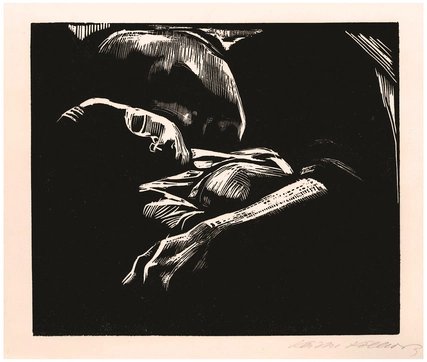
On an October day in 1914, right at the beginning of the First World War, an eighteen-year-old falls at the Belgian front. He is Peter, the youngest son of Käthe Kollwitz (1867 - 1945). His mother is a well-known Berlin artist who has won several awards and sets the tone for the leading German artists' group, the Berlin Secession. Her prints and posters are bold, political and socially committed. She has just founded the "Frauenkunstverein" (Women's Art Association) and fights for recognition and appreciation of women artists.
The news of her son's death hits Käthe in the heart. Her infinite grief finds expression in her art and radiates into her artistic commitment as a pacifist, and later as an opponent of National Socialism. The expressive sculptures and reliefs, up to the famous bronze "Pietà. Mother with Dead Son" (1937/39), whose enlarged cast you can see in the Neue Wache Unter den Linden, are full of heartfelt pain over loss, war suffering, mourning. In Berlin, the lively Käthe Kollwitz Square is named after her. You can learn the most about this special Berliner at the Käthe Kollwitz Museum Berlin and the Kupferstichkabinett.
Where: Käthe Kollwitz Museum, Spandauer Damm 10, Charlottenburg
Käthe Kollwitz Museum
Tip 4: For Freedom & Justice: The Revolutionary Democrat Rosa Luxemburg

Freedom is always the freedom of those who think differently. One of many wise quotes by Rosa von Luxemburg (1871 - 1919). As a born Jew, she felt the discrimination of minorities early on in her own life. Nevertheless, or precisely because of this, she committed herself to more justice and democratic-socialist action. And this at a time when very few women played any role at all in politics. Rosa von Luxemburg is considered a pioneer of the labour movement, an opponent of war and a critic of capitalism.
In the course of the November Revolution she was arrested by a vigilante group on 15 January 1919 and then interrogated by the right-wing military, beaten and then shot. She rests in the Friedrichsfelde central cemetery next to Karl Liebknecht. Here you will also see the Revolution Monument, a memorial to the dead of the workers' movement buried in the cemetery. In front of the Volksbühne am Rosa-Luxemburg-Platz you can find more quotes from her on plaques embedded in the ground.
Where: Rosa-Luxemburg-Platz Berlin, Mitte | Zentralfriedhof Friedrichsfelde, Gudrunstraße 20, Lichterfelde
Volksbühne at Rosa-Luxemburg-Platz
Tip 5: The physicist: Lise Meitner

Several schools in Berlin are named after her and the Lise Meitner House (1878 - 1968) at the House of Physics at Humboldt University also bears her name. Born in Vienna, she was one of the first women to earn a doctorate in physics. In 1926 she became the first woman professor of physics in Germany. A real breakthrough, especially in view of the fact that for many years of her professional career Meitner still had to enter the research and work rooms through the back entrance, as women were not yet allowed to study in Prussia at that time. Together with the chemist Otto Hahn, Meitner researched radioactivity and discovered nuclear fission.
Where: Lise Meitner Monument in the Court of Honour of the Humboldt University of Berlin, Unter den Linden 6, Mitte
SCULPTURES AND MONUMENTS IN BERLIN
Tip 6: Botanist and Nazi opponent: Elisabeth Schiemann

Elisabeth Schiemann (1881 - 1972) is one of the first women to be admitted to study natural sciences and subsequently also works as one of the first female scientists at the Botanical Garden. As she was not paid for her research work at the Botanical Museum, she kept her head above water by teaching at Berlin University. Her book Die Entstehung der Kulturpflanzen (The Origin of Cultivated Plants), published in 1932, became a standard work and Elisabeth Schiemann made a name for herself as a recognised botanist.
Even today, the results of her work are still of great importance. She vehemently rejected National Socialism and always liked to include quotations from Jewish and Russian authors in her lectures at university. She also publicly speaks out against the National Socialist unjust state. Together with her sister, she hid two Jewish sisters and was honoured for this in 2014 by the Jerusalem Holocaust memorial Yad Vaschem with the title "Righteous Among the Nations".
Where: Botanical Garden, Königin-Luise-Straße 6-8, Steglitz
Tip 7: Mother Courage: Life and career of actress & theatre director Helene Weigel
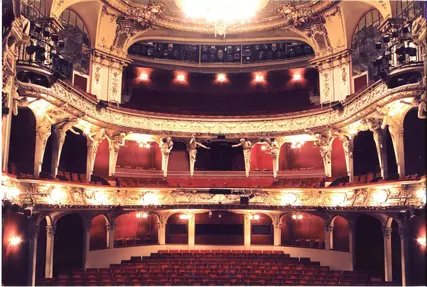
At the age of 19, the young actress already attracted attention in her debut role as Marie in Büchner's Woyzeck. In 1922, Helene Weigel (1900 - 1971) moved from the New Theatre in Frankfurt am Main to the big stages in Berlin. Here she also met Bertolt Brecht, with whom, in her own words, she "got together". But Helene Weigel took care of their first child alone - so that he could work undisturbed. Nevertheless, she had her big breakthrough in 1932, in the leading role of Brecht's "The Mother".
Only two years earlier, child two was born with daughter Barbara. Their third "child" together is the Berliner Ensemble, where he becomes artistic director and she artistic director. After Brecht's death, she continues to run the theatre until the end of her own life, receives numerous medals and awards, and in 1960 is awarded the title of professor, and continues to appear on stage as "Mother Courage".
Where: Berliner Ensemble, Bertolt-Brecht-Platz 1, Mitte
Berliner Ensemble
Tip 8: A realistic interpreter of injustice in this world - Anna Seghers
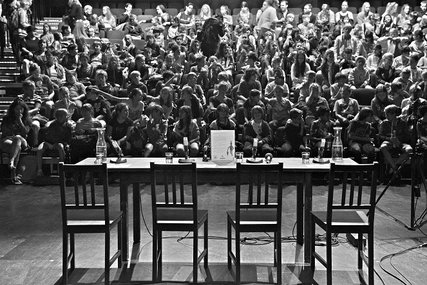
Her socially critical publications, for which she received awards, made her a serious literary figure even before 1933. When the Nazis came to power, Anna Seghers (1900 to 1983) was forced to flee. She lives with her family in Mexico until the end of the Nazi era, where she writes what is probably her most successful novel, "The Seventh Cross", about humanity and solidarity as hope in hard times.
Other impressive works - often with women as the main characters - tell stories about the hunger for life and the longing for happiness, about the courage to be human and to remain true to oneself. Anna Seghers portrays women in their ordinary everyday lives, she does not create heroines, but her characters preserve their dignity - despite all political and social adversities.
Anna Seghers herself held numerous important offices, for example as president of the Writers' Association. She also co-founded the Academy of Arts.
If you would like to delve further into the life of Anna Seghers, visit the museum in Köpenick. You can discover several thousand books and the author's estate library in the original building.
Where: Anna Seghers Museum, Anna-Seghers-Straße 81, Köpenick
Tip 9: Strong, grandiose, moving: Marlene Dietrich and her life

Marlene's (1901-1992) unprecedented career begins at the end of the 1920s as Lola in the world-famous film "The Blue Angel" and will not stand still until old age: For a while, she's infamous as "box office poison" until she makes a comeback with "Destry rides again". In Hollywood, she plays under the direction of Billy Wilder and alongside Spencer Tracy, becomes a style and fashion icon worldwide, sings and murmurs chansons. But she shows other strengths as well: Marlene Dietrich thoroughly rejects the Nazi regime in the 1930s and becomes an American. During the war she supports and encourages the US troops with performances and visits, the song Lili Marleen goes around the world. Numerous international awards lined her path. Only at an advanced age does she retire and never leaves her Paris flat,
After her death, Marlene Dietrich returned to Berlin. At first she was considered a traitor to the fatherland, but it was not until 1992 that a simple grave of honour was erected for her at the Stubenrauch Cemetery in Schöneberg. On 16 May 2002, Marlene Dietrich was posthumously made an honorary citizen of Berlin. Today, Marlene Dietrich Square honours her, as does the comprehensive exhibition at the Deutsche Kinemathek, where you can see films, photos, documents and accessories.
Tip 10: Women's dresses and Wilhelminian treasures: The collector and trans woman: Charlotte von Mahlsdorf
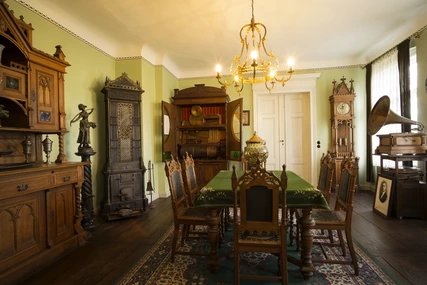
The founder and long-time director of the Gründerzeit Museum in Berlin-Mahlsdorf was born Lothar Berfelde on 18 March 1928 (1928 - 2002). She is considered one of the most famous trans women in Germany. Rosa von Praunheim even made a film about her dramatic biography with "I am my own woman". The father urges the child, who feels she is a girl, to join the Hitler Youth.
Her biography, the two argue a lot and one night Charlotte kills her father in his sleep. After four years in a psychiatric ward and in prison, she works as a junk dealer after the end of the Nazi regime and moves with her collection first into the deserted Friedrichsfelde Palace, then into the manor house in Mahlsdorf. Berlin owes everything you can see there today to the trans woman, who was already interested in old junk and girls' clothes as a child.
Where: Gründerzeit Museum in the Mahlsdorf Manor House (Gutshaus Mahlsdorf), Hultschiner Damm 333, Mahlsdorf
Gutshaus Mahlsdorf
Tip 11: Revered and despised: The writer Christa Wolf

Christa Wolf (1929 - 2011) is one of the most important voices in contemporary German literature. Her critical view of the world and of existing power structures has earned her many prizes, but has also made her books a political issue time and again - in both the West and the East. As co-author of the appeal "For our country", for example, she opposes the general rejoicing over German unification and warns against the appropriation of the GDR by the Federal Republic. Her non-conformity polarised opinion and earned her a lot of criticism. Her time as IM "Margarethe" at the Stasi is a case in point, even though she reports only good things about her fellow writers in her few reports. Later, she herself publishes her Stasi file.
Christa Wolf received many awards for her work, including "Kassandra" and "Der geteilte Himmel", among others the renowned Georg Büchner Prize. Christa Wolf is buried in the Dorotheenstädtische Friedhof in Berlin. Her work, as well as 175,000 manuscripts, diaries, correspondence and around 10,000 letters from readers, can be viewed in the Literary Archive of the Academy of the Arts in Berlin, including the correspondence with Anna Seghers.
Where: Dorotheenstädtischer Friedhof, Chausseestraße 126, Mitte | Literature Archive of the Academy of Arts, Robert-Koch-Platz 10, Mitte

